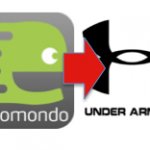What You Need to Know About the Current State of Traditional BPM Systems
 There is an abundance of BPM (business process management) software products that are pretty much alike. They can be different products with different names, features and pricing, but with mostly the same basic capabilities. If you have experience with one, you pretty much have a good idea what to expect from other applications.
There is an abundance of BPM (business process management) software products that are pretty much alike. They can be different products with different names, features and pricing, but with mostly the same basic capabilities. If you have experience with one, you pretty much have a good idea what to expect from other applications.
If you look at what every “classic” BPM software has, you can usually find:
- A process modeler. Basically, what this does is allow a user to depict and model a business process, strictly define the business logic, and design the workflow. BPMN (Business Process Modeling Notation) is a de-facto standard nowadays, but some of the most popular (e.g., Pega) rely on proprietary notations.
- A data modeling environment. There are different approaches. Some vendors use XML documents to store process attributes. Others rely on relational database management systems.
- A visual forms editor. This serves as a façade for users to communicate with or act on a process.
- A process engine. The process engine is the backend component that executes the workflow and tracks the processes.
- A rules engine. Embedded or tightly integrated, or sometimes sourced from another vendor, the rules engine organizes the information and actions within a process, keeping it in line with the logic and formulas assigned to it.
These may be considered the “bare necessities” of a BPM software, and as already discussed, a substantial number of vendors already have features that match this list of basic requirements. But are these enough?
The traditional solution
Traditional or “classic” BPMS need a highly skilled and experienced professional to ensure a successful implementation. In the downloadable whitepaper below, it’s noted that 25% of CIOs claim there is a considerable gap in employee skills in the BPM space, which impacts businesses negatively.
Add to that the required software training, hard-coded processes too pricey to customize and update, as well as the resulting lack in motivation to learn the intricacies of the software.
With pretty much the same basics, the current solutions provided by traditional BPMS vendors may be too standardized to eventually be deemed inadequate, from the context of emerging needs.
The current solution
In 2012, Gartner held a summit to discuss the so-called next generation of BPM. This summit yielded a new concept: intelligent business operations (IBO) or iBPMS (intelligent business process management suite). Examples of additional features of IBO or iBPMS include:
- Adaptive case management
- Advanced analytics (real-time intelligence, predictive capabilities, decision-making capabilities, big data, etc.)
- Cloud
- Mobile
- Social
In a nutshell, the iBPMS concept means integrating real-time intelligence and analytics with decision management technologies, allowing executives to use these resources, in real time, for actual business transactions and operations.
 New capabilities
New capabilities
Various global business trends will push the growth of an IBO approach forward, so says Gartner. As quoted from the summit’s press release, one such trend would be “in-memory analytics to enable automated decisions and best-next-action recommendations.”
An apt example of this would be the intelligent redirection of customers to counters with shorter waiting lines based on real-time analysis of total demand per counter in a mall, airport, or sporting event.
Differentiation
To keep up with the times and to provide businesses the differentiation they need, vendors have brought forth their own additional features into the game. Think about “executable architecture” where company’s goals and capabilities are explicitly mapped to processes, projects, cases. BPMS should evolve to the unified work environment able to manage projects, processes and cases. The key benefit of such environment is the unique collaboration experience where any task, project, process, peer, manager, customer or partner can be followed, invited and favored much like in social networks like Facebook or LinkedIn, now within the company.
As to the emerging power of mobility, vendors are making their software available on the iPhone/iPad/Android, allowing for continuous access and collaboration through multiple mediums.
To provide true, tangible value, differentiation is key. In the business world, once stagnation is reached, the odds of things going downhill are pretty significant. Competing in a cutthroat market with a “true” BPM solution with a standard feature set may work against you in the long run. To stay relevant and competitive, investing in solutions that dare to move against the norm through capabilities that address emerging trends and needs is an avenue worth exploring.
For more on the alarming state of traditional BPMS, download the Comindware report here.







